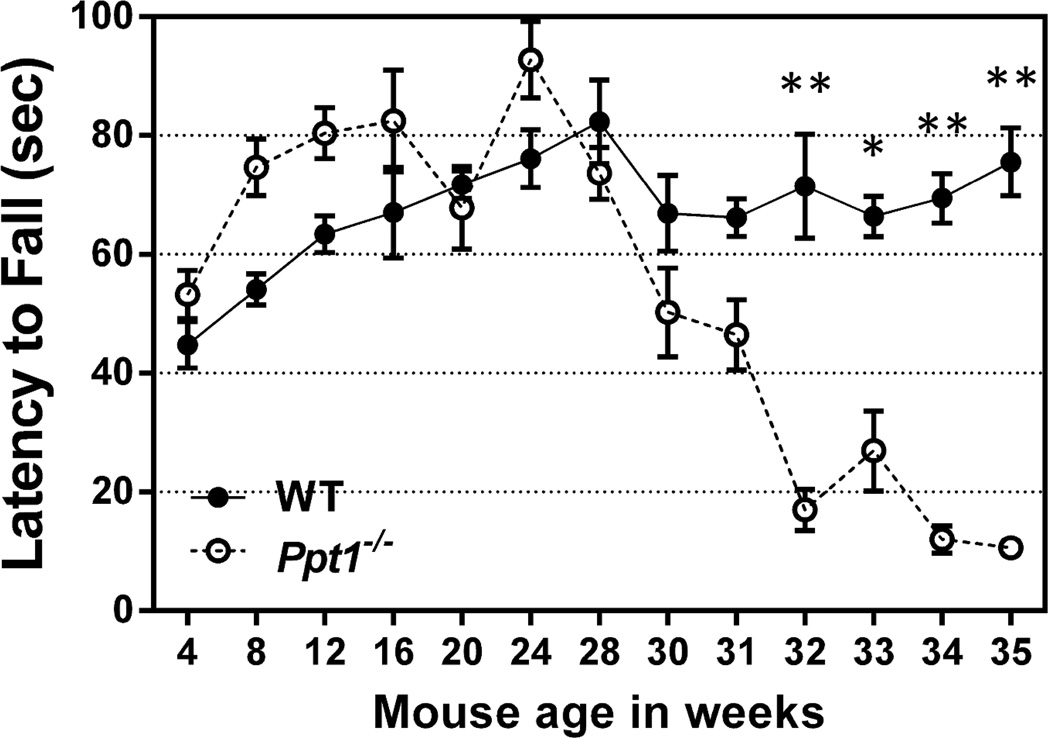Figure 1.
Ppt1−/− mice develop a motor coordination deficit that becomes significant at 32 weeks.
An accelerating rotarod (0-40 rpm in 120 seconds) was used to measure the motor skills of Ppt1−/− and wild-type (WT) mice beginning at the age of 4 weeks. Data points represent mean ± S.E.M. of the time mice were able to stay on the rod. Two-way ANOVA with Bonferroni’s posttest for multiple comparisons was used to determine statistical significance (*P < 0.001, **P <0.0001). Five wild-type mice were assessed at all time points. The experiment started with 9 Ppt1−/− mice, but that number decreased over time due to mouse death (n = 9 through 30 weeks; 31 and 32 weeks, n = 8; 33 weeks, n = 7; 34 weeks, n = 4; 35 weeks, n = 3).

